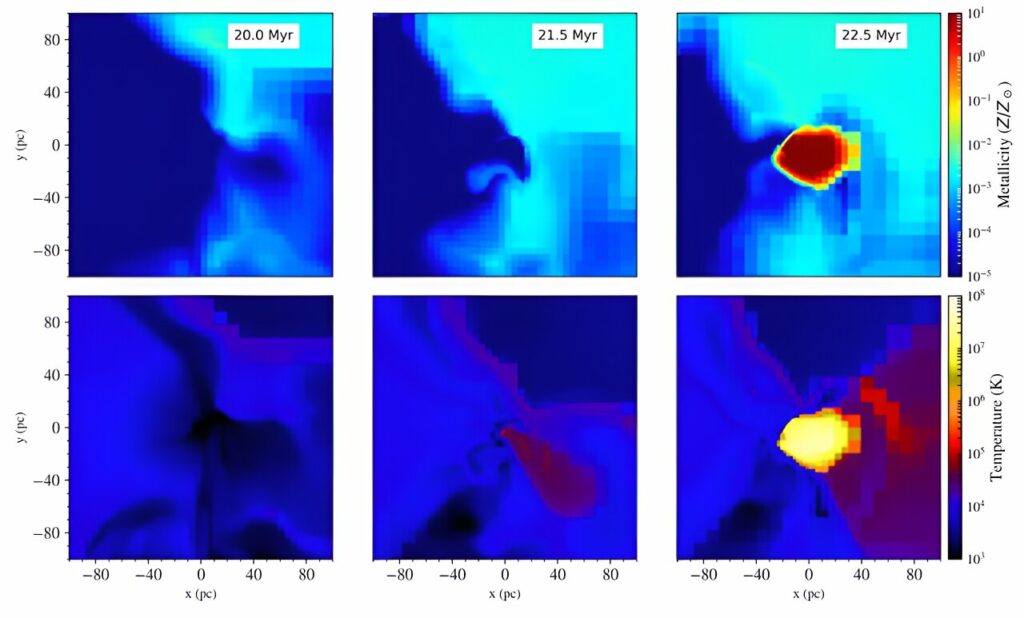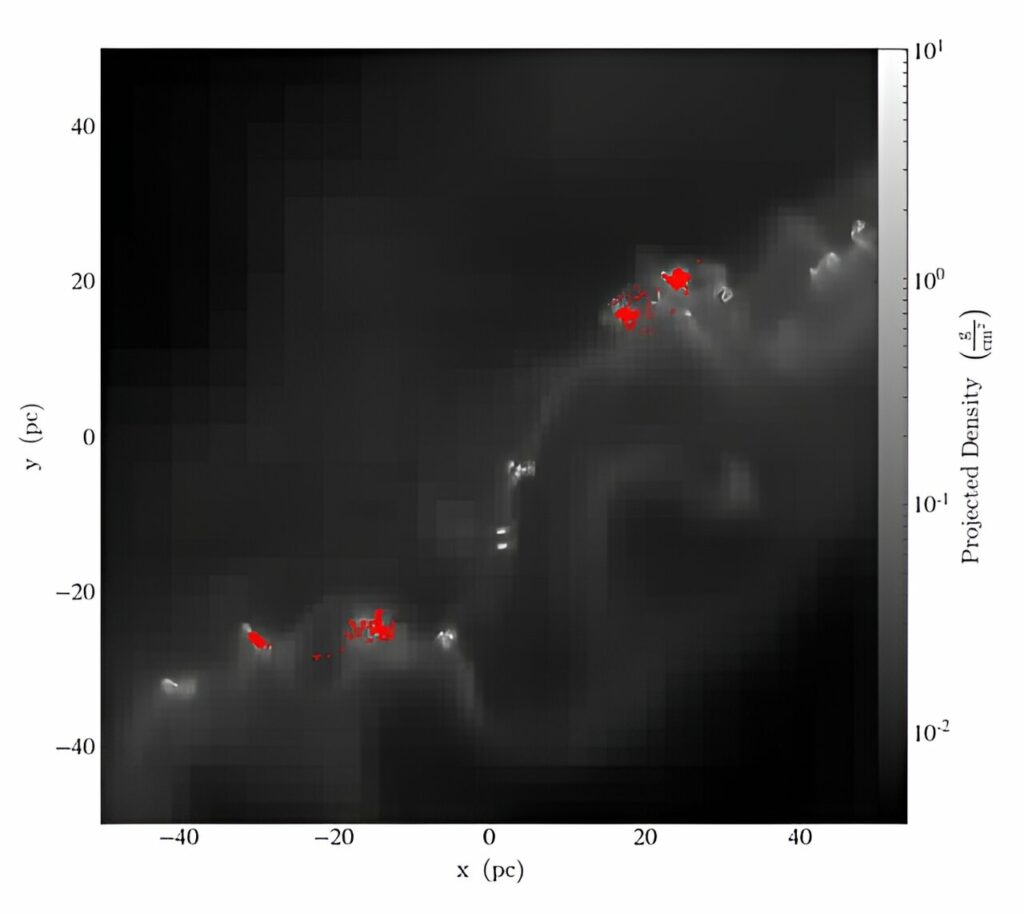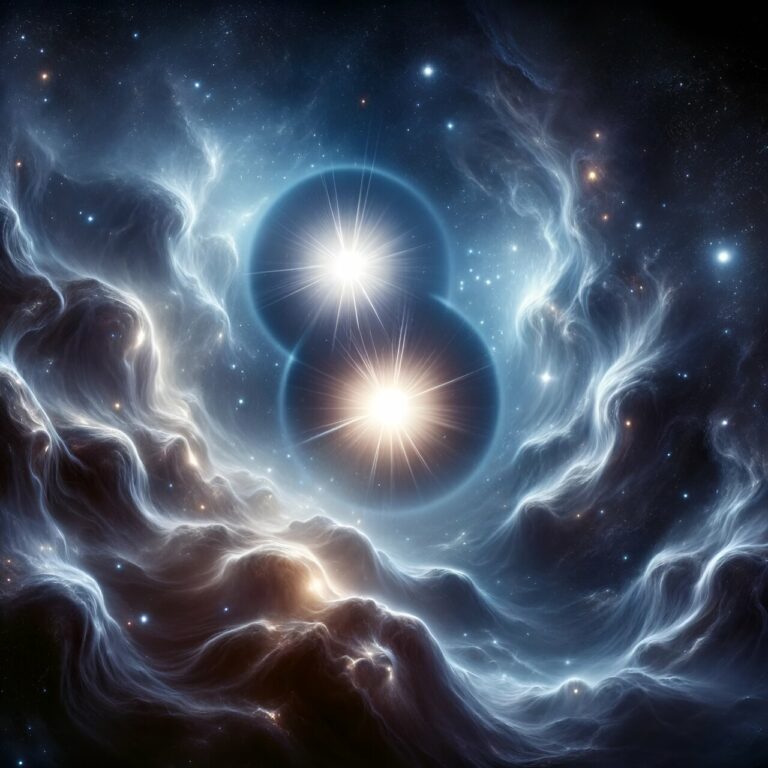While the First Stars May Elude Observation, Their Influence on Early Galaxies Could Remain Detectable
For a considerable duration, our comprehension of the initial galaxies in the universe relied heavily on theoretical explanations. The light emitted during that era took billions of years to reach us, and during its journey, it underwent distortion and elongation into the infrared spectrum. Valuable information regarding the first galaxies is concealed within this chaotic light. However, with the advent of the James Webb Space Telescope (JWST) and its remarkable infrared capabilities, we have managed to observe further into the past with unprecedented clarity.
The JWST has successfully captured images of some of the earliest galaxies, resulting in a plethora of fresh insights and thought-provoking inquiries. Nevertheless, it is unable to directly observe individual stars.
So, how do astronomers detect the influence of stars on the initial galaxies of the universe?
Stars possess immense power and exhibit dynamic behavior. They possess the ability to merge atoms, giving rise to entirely new elements through a process known as nucleosynthesis. Supernovae, in particular, excel at this task, as their explosive outbursts release an abundance of energy and matter, dispersing it throughout the cosmos.
Supernovae have existed since the early stages of the universe. The initial stars in the universe, referred to as Population III stars, were exceptionally massive. It is these massive stars that undergo supernova explosions, indicating that there must have been an exceptionally high occurrence of supernovae among the Population III stars.
Recent research delves into the profound impact that these supernovae must have had on their host galaxies. The study titled “How Population III Supernovae Determined the Properties of the First Galaxies” has been accepted for publication in The Astrophysical Journal and is available on arXiv. The lead author of this study is Ke-Jung Chen from the Institute of Astronomy and Astrophysics, Academia Sinica, Taiwan.
Stellar metallicity serves as the focal point of this study. During the inception of the universe, it primarily consisted of primordial hydrogen and helium, with only minimal quantities of lithium and beryllium. These four elements occupy the initial positions on the periodic table. In the realm of astronomy, elements beyond hydrogen and helium are referred to as “metals,” and their abundance in the universe gradually increases over time due to stellar nucleosynthesis.
However, hydrogen continued to dominate the universe then, just as it does now. It was only after the formation and subsequent explosions of the first stars that other elements began to play a significant role.
“The emergence of primordial (Pop III) stars at z ~ 20 ~ 25 marked the conclusion of the cosmic dark ages and the commencement of the formation of the first galaxies and supermassive black holes (SMBH),” state the authors of the recent paper. Yet, their contribution as creators of astronomical metals lies at the core of this research.
To investigate how Pop III stars influenced early galaxies, the researchers employed computer hydrodynamical simulations. They specifically examined core-collapse supernovae (CCSNe), pair-instability supernovae (PISNe), and Hypernovae (HNe).
The formation of stars is dependent on the presence of cold and dense gas. If the gas is too hot, it lacks the necessary density to collapse into protostellar cores. However, the research conducted has revealed that when Pop III stars explode as supernovae, they release metals that disperse into the surrounding gas. These metals effectively cool down the gas that is conducive to star formation, resulting in a more rapid formation of stars. The study suggests that supernova remnants from a top-heavy Pop III IMF generate a greater amount of metals, which in turn enhances gas cooling and facilitates earlier Pop II star formation in the initial galaxies.
According to the simulations, the supernova remnants (SNR) originating from the Pop III supernovae gravitate towards the center of the dark matter haloes in which they are located. The authors explain that these Pop III SNRs, along with the primordial gas, are pulled towards the center by the gravitational force of the halo. Occasionally, these SNRs collide, leading to the creation of turbulent flows. The turbulence causes a mixing of the gas and metals from the supernova, resulting in the formation of filamentary structures that eventually condense into dense clumps due to the combined effects of self-gravity and metal cooling of the gas.

This results in an increased formation of stars, although currently they are still classified as Pop III stars. These stars have not yet been enriched by the earlier Pop III supernovae and are composed of primordial gas. Some of these later Pop III stars form before the initial ones reach the central region of the halo, creating a complex situation.
According to the authors, the second wave of Pop III stars then exert significant radiative and supernova feedback before the initial Pop III supernova remnants reach the central region of the halo.
These Pop III stars heat the surrounding gas through their intense ultraviolet radiation, as depicted in the provided figure, which hinders star formation. However, due to their massive nature, they have a short lifespan. When they explode, they disperse metals into their surroundings, which can cool the gas and stimulate further star formation. “After a brief lifespan of approximately 2.0 million years, the star perishes as a PI SN, causing its shock to heat the gas to high temperatures (> 105 K) and expel a significant amount of metals that enhance cooling and facilitate a transition to Pop II star formation,” the authors clarify.

This is the place where the earliest galaxies were influenced by the presence of Pop III stars. By introducing metals into the clouds of gas where stars were forming, these stars caused the gas to cool down. As a result, the cooled gas fragmented, leading to the formation of less massive Pop II stars in the next generation. “As depicted in Figure 6’s right panel, the mass scale of these Pop II stars shifted towards the lower end due to the efficient cooling effect of metals, resulting in their formation within a cluster.”
Pop III stars were primarily found within dark matter haloes. However, research demonstrates their impact on the subsequent generation of Pop II stars, which populated the early galaxies. One question that astronomers have pondered about the first galaxies is whether they were predominantly composed of extremely metal-poor (EMP) Pop II stars. Nevertheless, this study presents a different perspective. “Hence, our findings indicate that EMP stars were not representative of the majority of primitive galaxies,” the authors conclude.
This article is republished from PhysORG under a Creative Commons license. Read the original article.
Do not forget to share your opinion with us to provide you with the best posts !




0 Comments